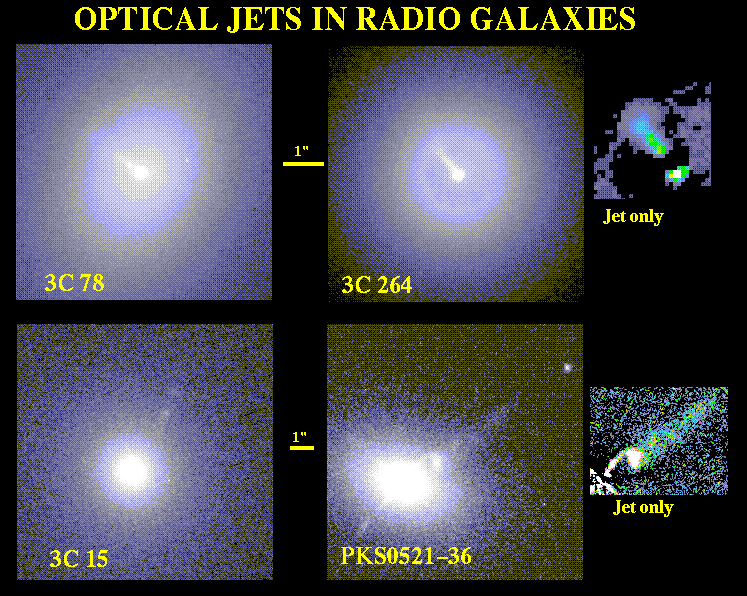
Beyond the jet of M87, discovered in 1918, optical detections of further jets had to wait almost half a century. The next brightest ones are a hundred times dimmer, although there are plenty of radio jets to examine. Apparently the optical radiation, from relativistic electrons spiralling at nearly the speed of light through the jets' magnetic fields, require unusually high energies or special conditions to appear, compared to the ubiquitous radio jets. A handful were detected from ground-based images, and several more have been found (often serendipitously) during analysis of HST observations. Four of the clearest examples are shown here.
PKS 0521-36 was first detected form the ground, and appeared somewhat like a larger, more distant version of M87 - complete with a bright knot at the same radius within the galaxy. The HST image shows the knot in detail. In 3C 264 (NGC 3862), the optical jet was serendipitously discovered by Phillippe Crane and colleagues in 1993; radio observations again show an excellent structural match. The other two - 3C 15 and 3C 78 - are both HST discoveries, with 3C 15 just submitted for publication at this writing. For PKS0521-36 and 3C 264, an additional image is shown after subtracting a model for the galaxy's starlight and adding pseudocolor to enhance some of the details.
These HST images were provided by Stefi Baum and Andre' Martel. Each was a red-light exposure in the high-resolution PC CCD of the WFPC2 camera system. North is at the top for each, and the upper and lower rows have different scales as indicated.